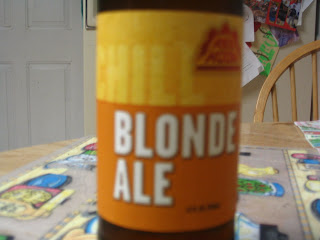In Masei 35:9-34, the Torah discusses the establishment of "Arei Miklat" - cities of refuge where people who killed b'shogeg (translated for our purposes as unintentionally) would travel to escape the goel hadam - the avenger of the blood of the deceased. The Torah devotes a great deal of time to the discussion of the establishment of the cities and to which types of acts would qualify as unintentional and allow for the killer to seek refuge. I would like to focus on three concepts in this post.
Prior to actually detailing the laws of the Arei Miklat, the Torah alludes to their establishment. In Masei 35:6, the Torah indicates that Hashem directed the Jews to set up six cities which will be Arei Miklat and that the levi'im will have an additional forty-two cities in addition to those six cities. The sefer Ohev Yisrael (as brought in the Ma'ayana Shel Torah) teaches that the six cities are in accordance with the six words which comprise the Shma Yisrael. The Ohev Yisrael then says that the words "V'aleihem Titnu" that on those six cities you should provide an additional forty-two cities (totalling 48 cities) are in accordance with the forty-eight words of the V'ahavta portion of the Shma. The Ohev Yisroel explains that the six words of the Shma and the forty-eight words of the V'ahavta are our cities of refuge, providing a place for all the Jews to seek protection, even if they committed an evil deed. By accepting Hashem through the recitation of the shma, the Jew will gain the protection from the goel hadam - the negative angels that are created as a result of his act.
The Chidushei Harim (also brought down in the Ma'ayana Shel Torah) explains the manner in which the city of refuge functioned. He states that if a person killed unintentionally and is so guilt wracked that there is nowhere that he feels comfortable due to his bitterness and self loathing over the killing, then Hashem says to the person - I have a place for you, the city of refuge will take you in. On the other hand, if the person is not distraught over the killing and is comfortable where he resides, the city of refuge will not take him in and he will not have a place in the ir miklat.
The Ma'ayana Shel Torah then brings the Sfas Emes who analogizes this concept taught by the Chidushei Harim to the high holidays. If a person feels true guilt over his misdeeds during the year and pours out his heart on Yom Kippur and accepts on himself to repent from his sins which cause him to feel that he has no place in this world, then Hashem says to the person - I have a place that can take you in -- the walls of the Sukkah will envelop you and protect you from evil.
I once heard a similar thought from R' Zev Cohen of the Adas Yeshurun in Chicago. He talked about how after the person has gone through Rosh Hashana and Yom Kippur and poured out his heart, he enters the Sukkah which is Hashem's way of giving the Jews a big reassuring hug.
I would like to discuss one additional point. The Rambam in Hilchos Rotzeach 8:5 writes that the Beis Din must prepare paths to the ir miklat and widen them as required. They must also smooth out the path and prepare bridges. If the way to the ir miklat requires one to take a road that forks, the Beis Din must set up a clear sign so that the person can swiftly get to the ir miklat and escape the goel hadam.
I feel that the acts that the Beis Din does are precisely like what Hashem does for us before the High Holidays. The chazal teach us "Haba Litaher Misayin Oso" - one who wants to repent, Hashem helps him to do so. The same way that the Beis Din set up the road to allow access to one who truly agonizes over his acts and wants to seek refuge in the ir miklat, so too Hashem makes our way to teshuva accessible before Yom Kippur so that we can be enveloped in the protective hug of the sukkah.
If you have seen this post being carried on another site such as JBlog, please feel free to click here to find other articles on the kosherbeers blogsite. Hey its free and you can push my counter numbers up!








